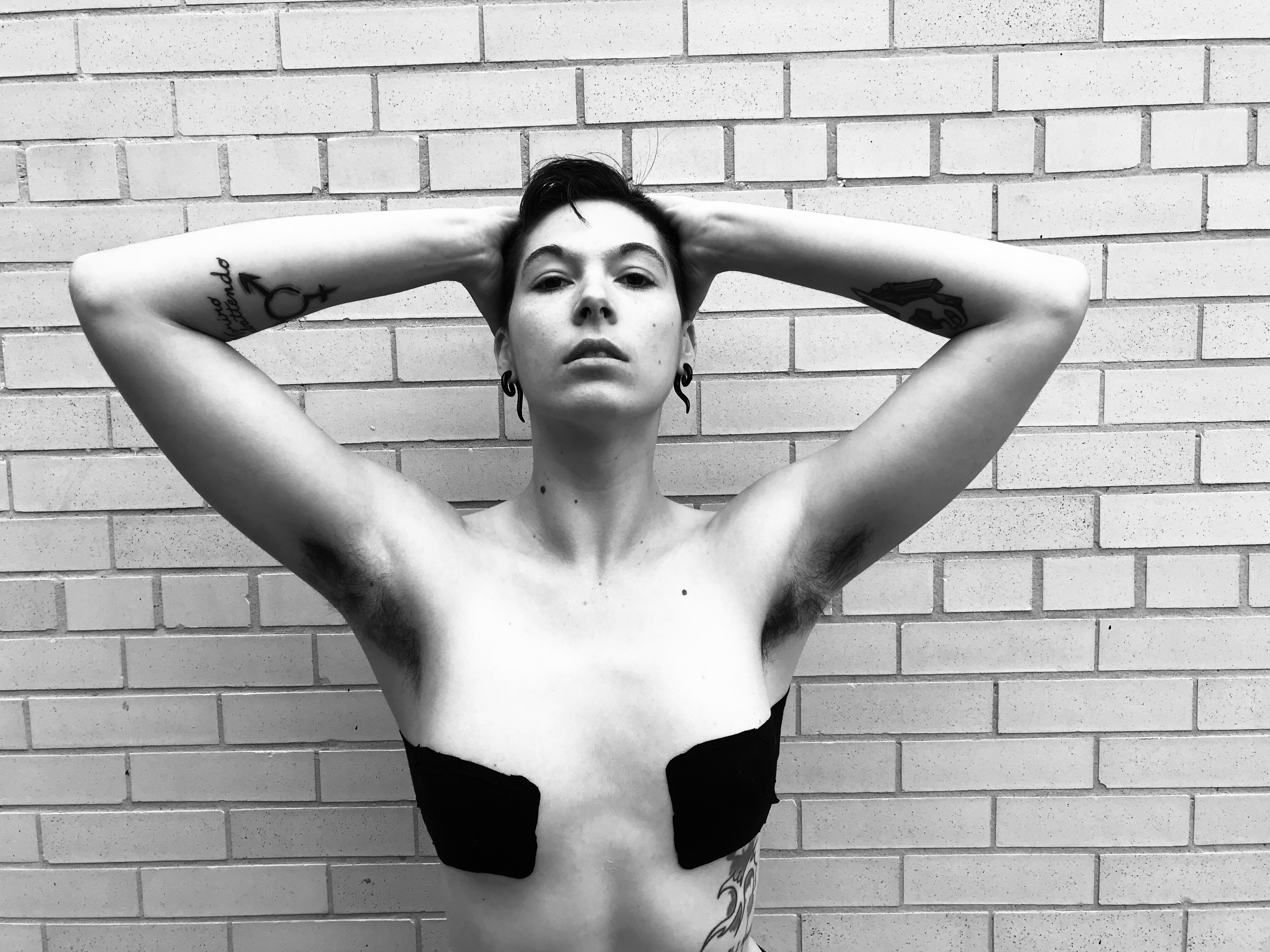CHICAGO — When I started writing for Art Intercepts, I knew I wanted to expand my portion of this platform to include other trans voices. I can talk all day about my experience, but mine is such a narrow window of an already underrepresented community. This winter I’m taking some time to talk to other trans dancers to give you a broader idea of where we come from, what we’re up to, and how we navigate the dance community. With that, meet Sam!

Sam Virgilio is a “twirling transmasculine pansexual alien” who, alongside winning my award for Best Identity Description, dances for Joel Hall, founded Blue Fire Dance Collective, works in dance administration and is an amateur circus performer.
Sam identifies as transmasculine, which they defined for me using stage directions:
“If far stage right is cis-feminine or transfeminine — very much trying to ‘pass’ — and then masculine on the other side, or cis-male, in the middle is non-binary or gender neutral. I’m sort of on quarter stage between non-binary and cis-masculine, or trying to pass as cis-masculine.”
A transmasculine identity is sometimes confused with trans male, but they’re not quite the same. For Sam, being transmasculine means being a masculine figure in the world, but not necessarily worrying about passing as male. For Sam, it’s okay if people don’t look at them and automatically assume, “That’s a man.”
While I’ve been referring to Sam using the pronouns “they” and “them,” Sam is equally comfortable using masculine “he” and “him” pronouns. Their decision to use both actually came out of their experience in rehearsals. Initially, Sam was only using they/them pronouns. However, they found that in a rehearsal setting the director’s “mouth is going faster than their mind and it’s easier for them to switch to a binary pronoun,” says Sam. Rather than getting “she/her,” Sam told their director that using “he/him” would be okay. While Sam initially made this move out of convenience for their director, they realized that they are equally comfortable with either pronoun, and thus, uses both. In this post, I will use both “they/them” and “he/him” pronouns to address Sam.
Hailing from Florida, Sam trained predominantly in classical ballet, Russian folk dance and African. They’ve performed in a wide range of companies including various independent choreographers, and most recently with the Joel Hall Dancers.
If you’re thinking, as I was, “WOOF, classical ballet in Florida, rough place to be trans,” Sam actually experienced incredible support from his community after coming out.
“When I came out, my old ballet teacher from the academy reached out and told me how proud she was of me… When people say ‘oh the bible belt, they can’t get with it,’ that’s bullshit… We’re all ready to make that step. It’s not just Chicago. It’s not just the more progressive cities,” says Sam.

When I asked Sam what companies who currently only cast cisgender dancers could do to be more inclusive of transgender dancers, he cited Joel Hall’s recent performance of Nuts and Bolts as an example. Nuts and Bolts is not about queerness — it’s Joel Hall’s take on the classical ballet The Nutcracker — but there were two trans dancers in the production. Sam performed a variety of traditionally male and female ensemble roles while wearing a female-oriented costume, a full mustache, and a bound chest.*
According to Sam, he wasn’t the only one playing with the gender spectrum in this show. There were cis women taking on traditionally male roles, and cis men performing roles originally choreographed for women because that’s where their abilities fit best.
Toward the end of our interview, I asked Sam what they want company directors to know about trans dancers. Here’s what they said:
“Look at and listen to the people that you’re serving, both the dancers in your company and the audiences as well, and understand that we are getting gayer and we are getting queerer and we are progressively coming out more and more and more. While tradition is wonderful — I come from tradition, I come from a classical ballet background, I understand the importance of tradition — there’s also something to be said for adjusting to what’s going on right now and the people who are in front of you right now. You shouldn’t do a disservice to those people in the name of tradition. That’s not fair to you, that’s not fair to us, and that’s not fair to the community because that’s not creating art to its full potential… It doesn’t need to be revolutionary in its queerness, it just needs to be inclusive.”
*Note: Chest binding during athletic activity must be done with a looser fitting binder or specific athletic binder to prevent damage to the ribcage. Never bind your chest using ace bandages. For more information on chest binding, visit transguys.com. Information about transgender medical care can be found at howardbrown.org.
